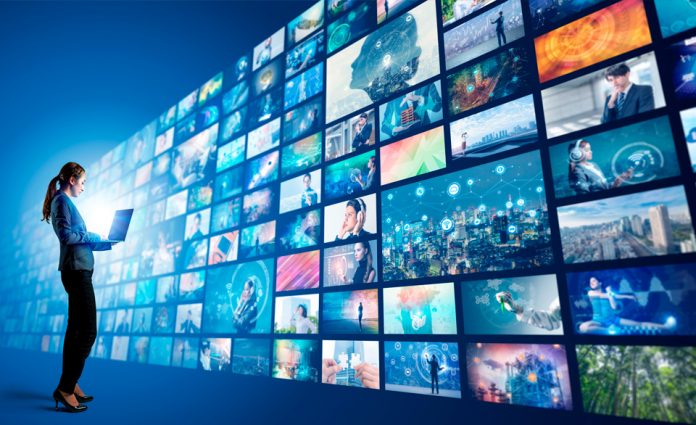This article has been written by Sk Ashfaq Hassan, pursuing a Diploma in Legal English Communication – oratory, writing, listening and accuracy from LawSikho and edited by Shashwat Kaushik.
It has been published by Rachit Garg.
Table of Contents
Introduction
The consumption of various forms of visuals, audios, videos, images, symbols, and signs provided by media does not merely entertain people but also communicates meanings, ideas, beliefs, and attitudes and attempts to influence the behaviour of its users, shape their interests, and affect norms and values existing in a society. This social phenomenon is known as “popular culture”. In other words, it is a set of widely accepted and promoted practices, trends, and activities through one of the strong tools known as media, which helps it disseminate its content to the masses at a given time. The concept of popular culture can be used as an analytical tool to enhance critical thinking ability, which is a must in this digital era of unending information.
India, with the highest-population is home to diverse cultural groups, and this is well reflected in Bollywood and other regional film industries, TV shows, “music”, “news”, and digital education channels. Popular culture in the media influences people’s preferences for foods, clothes, the design of houses, and drinks. Take a look at “Chai”, barely a few centuries old on Indian soil and now regarded as the national drink of India. The Indian Premier League is one of the much-awaited popular cultural events of India with broad commercial reach, where cricket enthusiasts from different sections join together to support their favourite team, and millions watch it live on TV and mobiles. The young population of India, highly influenced by fashion advertisements and social media stars, feels the urge to change their lifestyles to match their celebrity idols. Gen Z doesn’t want to get themselves labelled as outdated by their peers; they actively follow new trends in clothing and are conscious of their body shapes and overall looks. A few reasons why popular culture emerges in the first place are that it provides shared experiences, which makes it easy to connect with others, and it gives entertainment and employment to people, which shapes the cultural landscape.
An insight into movies: the heart and soul of popular culture
Indian cinema, since its beginning, has been the most effective form of cultural expression in the modern era. The first film, Raja Harishchandra, made in 1913 by Dadasaheb, laid the foundation of Indian cinema. The silent film with a mythological genre gave its audience a taste of Indian culture. The advancements made in technology helped filmmakers make more engaging movies through the introduction of sound, colour, and music, which became internal parts of movies. Till the 1990s, Indian cinema was occupied with social themes like “rich-poor, and love-violence” and reflected traditional values in terms of family, gender roles, food preferences, and heroine dress sense. After introducing liberalisation, privatisation, and globalisation, western influence began growing gradually in cinemas, and more private TV channels found their way into the Indian media market. A new middle class emerged, and women could be seen taking on more independent roles. This was also mirrored in one of the advertisements for Bajaj Motor Bikes, where a woman enjoys a bike ride, identifying herself as married only by the sindoor on her head. Also, the role of regional film industries now making their way into mainstream Indian culture cannot be undermined.
Movies and music play a key role in evoking feelings and emotions and increasing the awareness of their audiences. “Mother India,” a patriotic movie, displays the struggles of the poor and illustrates Nehru’s utopian dream of progress in nation building. Munna Bhai MBBS, Lage Raho Munna Bhai propagates the three basic principles of non-violence, truthfulness, and fearlessness of Gandhism. The patriotic emotion is reinforced in the audience when they watch movies like Border, Chak De India, etc., and social attitudes about caste, colour, and religion are mirrored in movies like Kala, OMG, etc.
The emergence of OTT platforms such as Netflix, Amazon Prime, Sony Liv, etc with the promise of access to content anywhere on internet devices, gives working-class individuals an opportunity to relate their experiences in shows like Mirzapur, Bhaukaal, Kota Factory, Scam 1992, etc. Likewise, Lust Stories, Four More Shots Please!, and Western series like Game of Thrones, Money Heist, etc. are mostly preferred by urban middle-class individuals. romantic songs, punjabi songs, k-pop, rap songs, etc. form the soul of Indian popular culture. Movies, with their captivating and educational power, remain the heart of Indian pop culture.
Youth and popular culture

The country’s youth and student population are the main stakeholders in popular culture. Gen Z’s ideas, identities, and way of living are highly influenced by the various platforms of media such as social media, movies, web series, music, online gaming, influencers, news media, and commercial software with a promise to help its users fulfil their desires. Concepts like live in relationships, speed dating, hookup culture, etc, are becoming popular among youths. The Western sense of fashion with some Indian taste offered by premium brands is what most of the youth’s dressing style is nowadays.
They are creative and enthusiastic about share their moments and achievements in life on platforms like Facebook, Instagram, Twitter, Snapchat, etc. Youths know how to effectively use these platforms to grab opportunities, share their activism, and more easily connect to people from different countries sharing common interests. They don’t like missing posts, movies, cricket matches, or TV shows about their favourite celebrities. Gen Z doesn’t want to get themselves labelled as outdated by their peers; they actively follow new trends in clothing and are conscious of their bodies and looks.
The internet and digital gadgets empowered the media and made the whole world available at your fingertips. The dark side of this development is commonly known digital addictions among youths, such as social media addiction or zombie scrolling, porn addiction, gaming, etc. Popular culture in the media provides and promotes continuous consumption of content through addictive techniques that result in desensitisation and resensitisation of certain ideas and beliefs, particularly among young minds and children.
Politics and popular culture
Popular culture does not only reflect the existing interests of people; in contrast, it deliberately attempts to change and shape the cultural landscape of a society at a given time. Political parties spend crores of rupees on advertisements ahead of elections, and more coverage is intentionally given to selected news in media channels controlled by capitalists to reap political benefits. Adolf Hitler used propaganda movies to glorify his ideology and justify the killing of Jews. Through the media, he created a favourable popular culture to legitimise his actions. In this digital era of unending information and technological advancement, it has become easier to manufacture public opinions and shape the political preferences of the masses. The algorithm of social media works in such a way that it shows content based on individuals’ likes and beliefs, and the person might not be aware of the other side of the coin. The advent of Artificial Intelligence (AI) not only promises to increase the productivity of humans but also has the potential to adversely impact human lives with its extraordinary utilities, such as creating deep fakes and biassed programs.
Role of laws in regulating media and popular culture
Considering the crucial role of media in disseminating content, it becomes necessary to balance and hold them accountable. These are the following laws that endeavour to keep a check on the content of media:
The Information Technology Act, 2000
- Section 79 of the Act states that intermediary online platforms such as Facebook, Twitter, Youtube, etc. are not liable for content posted on their platforms by users unless they themselves publish it. However, these intermediary platforms are required to remove or delete unlawful and inappropriate content if approached by the affected party or government agencies.
- The material that is categorised as obscene and circulated on online platforms attracts Section 67 of the Act and is subjected to legal action.
- Unfortunately, hate speech and incitement are becoming the norm in the media. To control them, Section 69A of the Act, which mainly applies to hate content affecting national security, could be potentially used to reduce instances of hate speech in the media.
The provisions of the above Act indirectly affect the regulation of content on digital platforms, and the Information Technology (Intermediary Guidelines and Digital Media Code) Rules of 2021 hold the media liable for their transgressions against laws.
Central Board of Film Certification
The CBFC, empowered by the Cinematograph Act of 1952, examines and categorises film content for public display in the following categories U (universal), UA (parental guidance is advised for children below 12 years), A (Adult), and S (Special). The CBFC ensures that the content of films complies with the provisions of the Act and follows the guidelines laid down in the Cinematographic (Certification) Rules of 1983.
The Copyright Act of 1957
The Copyright Act of 1957 protects the rights of content creators and helps them to take and sustain their due credit. The Press Council of India is an autonomous body that governs the conduct and ethics of the print press in India. The Advertising Standards Council of India monitors and regulates advertisements. The Indian Penal Code of 1860 consists of provisions against offensive, defamatory, and harmful content.
Popular culture in the media plays a key role in shaping the perceptions of law and justice of its consumers, so laws that regulate the media are not very effective in keeping a check on the uncontrolled influence of popular culture. Laws must be updated as media technology is growing and developing new forms. It is a very challenging and uneasy task to make new laws that could monitor their negative impact, as it involves serious questions such as freedom of expression.
Conclusion
The popular culture in the media is complex and dynamic in nature. Recent technological developments have provided the media with an explosion of the internet and gadgets, resulting in an increase in the media’s penetrating power in far flung places. The powerful media is further empowered by progressive government policies, thereby forming crucial factors in the creation of Indian popular culture. It has an optimistic as well as a non-optimistic impact on our lives. Its influence is inevitable and consists of a blend of different cultures. Though it accommodates trends based outside of India that are observed at a superficial level, Indian traditional norms seem to be prevalent in most parts of Indian society. Only the test of time will determine what will prevail.
References
- https://crpmahavidyalaya.in/wp-content/uploads/2020/04/AR_Media-Gender-and-Popular-Culture-in-India-_-Tracking-Change-and-Continuity-2012-SAGE-Publications.pdf
- https://mymission.lamission.edu/userdata/alvarats/docs/Open%20Source%20Textbook/Popular%20Culture%20and%20Media.pdf
- https://www.academia.edu/45197580/Discuss_the_effects_of_cinema_on_popular_culture_Use_examples_to_prove_your_point
- https://timesofindia.indiatimes.com/readersblog/areyoungpeopleofasocietymoreinfluencedabypopculture/are-young-people-of-a-society-more-influenced-by-pop-culture-50519/
- https://networks.h-net.org/node/22055/discussions/9489784/digital-popular-indian-context-2010-2019
- https://www.epw.in/engage/article/popular-culture-and-caste-three-indias
Students of Lawsikho courses regularly produce writing assignments and work on practical exercises as a part of their coursework and develop themselves in real-life practical skills.
LawSikho has created a telegram group for exchanging legal knowledge, referrals, and various opportunities. You can click on this link and join:
Follow us on Instagram and subscribe to our YouTube channel for more amazing legal content.
 Serato DJ Crack 2025Serato DJ PRO Crack
Serato DJ Crack 2025Serato DJ PRO Crack










 Allow notifications
Allow notifications



